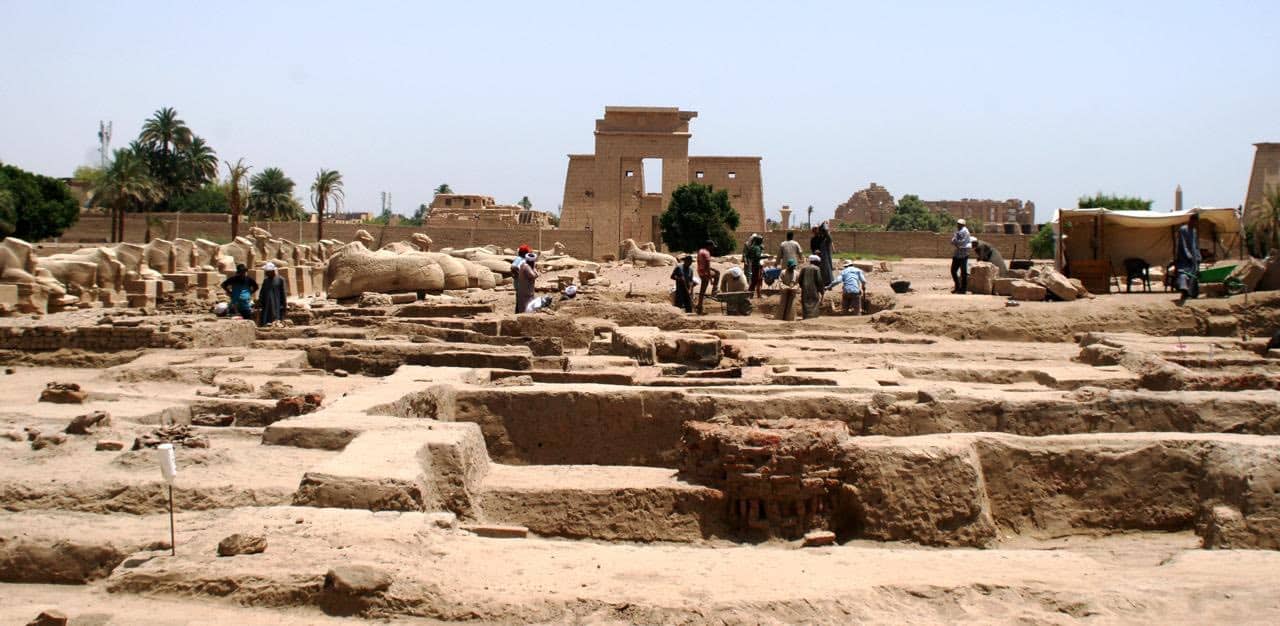

Egyptian archaeologists have unearthed a massive ancient wall and a series of bronze workshops in Luxor, shedding light on industrial life and royal construction during Egypt’s Pharaonic era, officials announced Sunday.
The discoveries, made by missions from the Supreme Council of Antiquities, are part of ongoing efforts to explore and preserve historical sites across Luxor Governorate. The findings include not only industrial and architectural structures but also burial remains and religious inscriptions.
One of the most significant discoveries was made at the Naga Abu Asba site in Karnak, where archaeologists revealed a large mudbrick wall believed to date back to the 21st Dynasty.

Dr. Abdel-Ghaffar Wagdy, Director-General of Luxor Antiquities, stated that each brick was stamped with the name of King Menkheperre and his wife. A sandstone gate was also discovered within the structure, further confirming the site’s historical significance.
Nearby, the excavation team uncovered workshops and kilns used for producing bronze statues, as well as a large brewery area. Among the items found were bronze statues of the god Osiris in different sizes, amulets, coins, and other tools.
Wagdy said these discoveries suggest the area served as a major industrial zone across different historical periods. He explained that these finds not only add to our knowledge of daily life in ancient Egypt, but also show how craft production was closely tied to religious and royal institutions.
In a separate excavation in the al-Asasif area of Qurna, archaeologists discovered several small wooden coffins believed to have belonged to children. The coffins were undecorated and in poor condition.

Mohamed Ismail Khaled, Secretary-General of the Supreme Council of Antiquities, said that human remains found inside will be studied to determine the children’s age, gender, and possible causes of death.
Khaled explained that these findings may offer new insight into how children were buried in ancient Egypt, which remains less understood compared to adult burials.
Additional artifacts from the site include pottery and limestone ostraca, which were used as writing surfaces, as well as two broken clay seals bearing the inscription “Supervisor of the House Khonsu.”

A nearby shaft contained small faience ushabti funerary, and a columned room with remnants of mortar was also found; however, it lacked inscriptions.
While in Luxor, Khaled also visited the Southern Chapels of the Akh Menu Temple in Karnak, where restoration work is underway in partnership with the French-Egyptian Center for the Study of the Temples of Karnak (CFEETK). The project involved structural repairs, cleaning, and detailed documentation of colorful wall inscriptions.

Mr. Mohamed Abdel-Badei, head of the Egyptian Antiquities Sector, mentioned that the work revealed scenes of King Thutmose III performing religious rituals, including depictions of the “Heb Sed” festival honoring Amun.
The restored chapels feature seven rooms and two large halls, in addition to the ancient pharaonic wall in Luxor, and now include visitor information signs and accessibility ramps.
Officials stated that all artifacts will be examined, documented, and possibly displayed in museums following further study. These discoveries support Egypt’s broader initiative to expand public access to its ancient heritage and attract cultural tourism.
The Ministry of Tourism and Antiquities released a statement, noting that these ongoing missions continue to uncover new layers of our history while helping to preserve and share Egypt’s archaeological legacy with the world.
